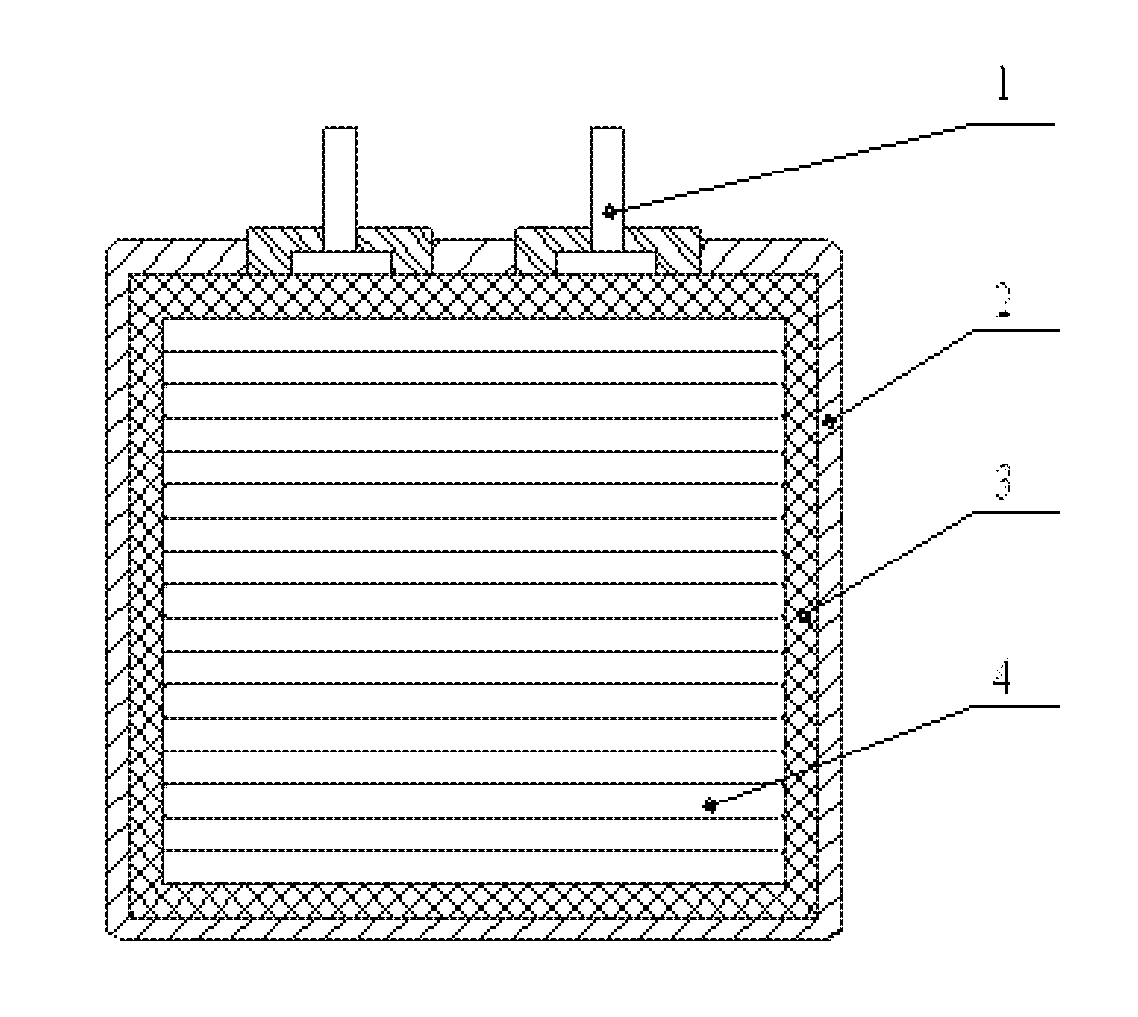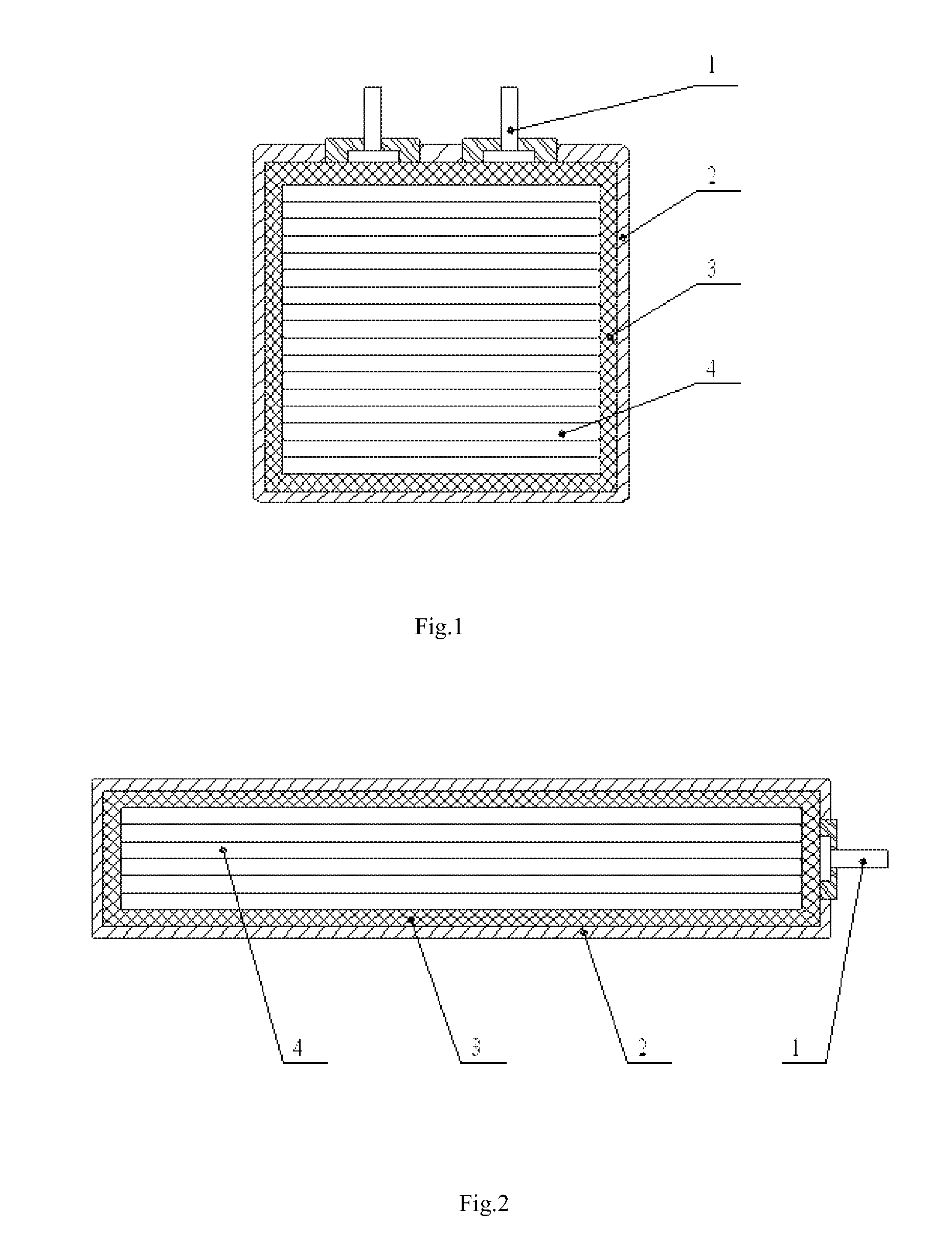Solid-state chemical current source and a method for increasing a discharge power
a chemical current source and solid-state technology, applied in the field of electric engineering, can solve the problems of pyrotechnic heaters and systems for their ignition, high internal resistance at ambient temperatures, and complicating the design of current sources, so as to prolong the high-power discharge time, reduce heat loss of heated galvanic cells, and reduce heat loss
- Summary
- Abstract
- Description
- Claims
- Application Information
AI Technical Summary
Benefits of technology
Problems solved by technology
Method used
Image
Examples
Embodiment Construction
[0043]Principle of operation of the present invention consists of the following:
[0044]The current leading-out wires are connected with an outside load and the current source containing the high-power galvanic cells, based on the solid ion conductors starts to produce electric current. At that, the ion conductor-based solid galvanic cells are heated up due to the ion transport in the solid ion conductors and perform an additional function of heating elements. The solid-state galvanic cells based on the solid ion conductors perform the function of the heating elements very efficiently because during heating the ionic conductivity of the solid-state ion conductors and a rate of the current-producing electrode reactions increase, and as a result the galvanic cells' internal resistance decreases and a power of the discharge current increases. A reciprocal resistance of the solid ion conductor-based galvanic cell increases exponentially with the temperature growth because in general in th...
PUM
| Property | Measurement | Unit |
|---|---|---|
| thickness | aaaaa | aaaaa |
| temperatures | aaaaa | aaaaa |
| specific ionic conductivity | aaaaa | aaaaa |
Abstract
Description
Claims
Application Information
 Login to View More
Login to View More - R&D
- Intellectual Property
- Life Sciences
- Materials
- Tech Scout
- Unparalleled Data Quality
- Higher Quality Content
- 60% Fewer Hallucinations
Browse by: Latest US Patents, China's latest patents, Technical Efficacy Thesaurus, Application Domain, Technology Topic, Popular Technical Reports.
© 2025 PatSnap. All rights reserved.Legal|Privacy policy|Modern Slavery Act Transparency Statement|Sitemap|About US| Contact US: help@patsnap.com


